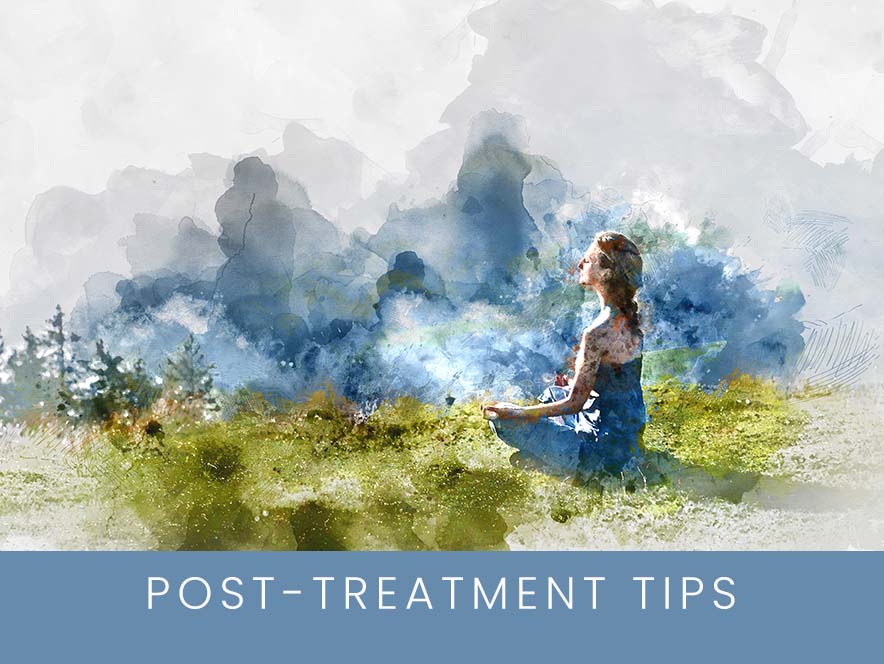Ketamine has been used to treat a wide range of mental health disorders, from depression and post-traumatic stress disorder (PTSD) to obsessive-compulsive disorder (OCD). After undergoing ketamine treatment, many patients report notable improvements in their condition. However, it is important to remember that the benefits of ketamine treatments can be maintained by implementing strategies for continuing care after the course of ketamine recommended by your doctor. In this blog post we will explore five ways you can take charge of your mental health after ketamine treatment and build on its positive effects.

1. Exercise
Dr. Ashish Sharma observed:
The importance of exercise is not adequately understood or appreciated by patients and mental health professionals alike. Evidence has suggested that exercise may be an often-neglected intervention in mental health care.
Aerobic exercises, including jogging, swimming, cycling, walking, gardening, and dancing, have been proved to reduce anxiety and depression. These improvements in mood are proposed to be caused by exercise-induced increase in blood circulation to the brain and by an influence on the hypothalamic-pituitary-adrenal (HPA) axis and, thus, on the physiologic reactivity to stress. This physiologic influence is probably mediated by the communication of the HPA axis with several regions of the brain, including the limbic system, which controls motivation and mood; the amygdala, which generates fear in response to stress; and the hippocampus, which plays an important part in memory formation as well as in mood and motivation.
See “Exercise for Mental Health,” in Primary Care Companion Journal of Clinical Psychiatry, 2006; 8(2):106.
2. Enjoy a Healthy Diet
A healthy diet is another often overlooked but very powerful way to extend the effectiveness of your ketamine treatments. Simple things like adding more fruits, vegetables and whole grains to your diet. Eat less meat, white bread, sugars, and fast-food.
A diet packed with vegetables, without meat or with little meat, can:
promote weight loss
reduce cholesterol & risk of heart disease
lower chances of colon cancer
reverse or manage diabetes and
give you more energy.
Check out ForksoverKnives.com for a vegetable-based feast for the eye and body!
3. Give Yoga a try!
Try yoga in the privacy of your own home with the help of Youtube, or join a class to make some new friends. The benefits of yoga are many:
- Reduce stress and build stress resilience
- Gain flexibility
- Increase strength
- Improve your posture
- Learn to concentrate and focus
- Improve mindfulness
- Gain mental clarify and calmness
- Look and feel younger
- Improve blood and oxygen circulation
- Lower your blood pressure
- Tone your muscles
- Improve your sleep
- Relieve pain
- Keep your joints healthy
- Prevent injury
- Have more energy, and
- Improve your mood.
4. Try Meditation
We recommend a daily mindfulness practice for developing new coping skills for life’s inevitable difficulties. There are many types of meditation, but guided meditation seems to be the most helpful to newcomers. Our patients who have taken up a mindfulness practice have been successful at coping with depression and other mental health issues.
There are a lot of free online meditations. Some are recorded; some are live. Some are Buddhist-based; some are not. It is helpful to think of Buddhism as a philosophy and not a religion, and as a way of thinking that supplements any religious or secular life philosophy. As the meditation instructors often say, “Take what resonates with you; leave the rest behind.”
Take a look at audiodharma.org and the associated insightmeditationcenter.org. There is a fantastic free 45-minute session every weekday at 8:00 a.m. (mountain time).
The benefits of meditation are long-lasting. Sarah Lazar, Harvard Medical School neuroscientist, reported, after comparing the brains of consistent older meditators with regular folks:
”It’s well-documented that our cortex shrinks as we get older – it’s harder to figure things out and remember things. But in this one region of the prefrontal cortex, 50-year-old meditators had the same amount of gray matter as 25-year-olds.”
To make sure this research finding was correct, Lazar conducted another study, with people who have never meditated before, using a meditation group and a control group. She reported: “We found differences in brain volume after eight weeks in five different regions in the brains of the two groups.”
See Brigid Schulte’s article, “Harvard neuroscientist: Meditation not only reduces stress, here’s how it changes your brain” in the Washington Post online.
Meditation teacher Nikki Mirghafori speaks and teaches about meditation and mindfulness every weekday at 7 p.m. mountain time. Happy Hour is dedicated to the cultivation of loving-kindness, compassion, sympathetic joy, equanimity, gratitude, forgiveness, and other heart practices.
Catch her at nikkimirghafori.com/happyhour
5. Read a Good Book
Sometimes the struggle with your mental health persists even after receiving intensive treatments. That’s why it’s important to supplement treatments like ketamine with additional methods of healing—such as reading! Science has shown us that reading not only helps improve our overall mood but is also connected to many other positive outcomes in terms of mental wellbeing. Reading can be an effective tool in supporting better mental health, even if you have already had a successful ketamine experience.
Get interested in self-help books. Get a library card!
Try these:
- Self-Compassion, by Kristin Neff
- The Untethered Soul, by Michael A. Singer
- Meditation for Fidgety Skeptics, by Dan Harris
- Kindfulness, by Ajahn Brahm
- Buddhist Bootcamp, by Timber Hawkeye
- Aging as a Spiritual Practice, by Lewis Richmond
- Atlas of the Heart, by Brene Brown
- Make Miracles in Forty Days, by Melody Beattie
6. Practice Self Compassion
Dr. Kristin Neff, self-compassion guru, says:
Self-compassion involves acting the same way towards yourself when you are having a difficult time, fail, or notice something you don’t like about yourself (just as you would act toward a good friend in need). Instead of just ignoring your pain with a “stiff upper lip” mentality, you stop to tell yourself “this is really difficult right now,” how can I comfort and care for myself in this moment?
Take her self-compassion quiz at self-compassion.org.
Try out her self-compassion exercises here: https://self-compassion.org/category/exercises/
Here are four steps we recommend for taking a self-compassion break:
Step 1: Think about something happening in your life that causes stress in a way you can feel physical discomfort.
Step 2: Witness and acknowledge the feeling. Don’t fight it off. Be mindful.
Step 3: Recognize that hurt is an element of the human experience.
Step 4: Comfort yourself. Give yourself a hug and say, “I will be patient with myself.” “I forgive myself; it’s okay.” “I accept myself as I am right now.” “I will give myself the compassion I need.”


